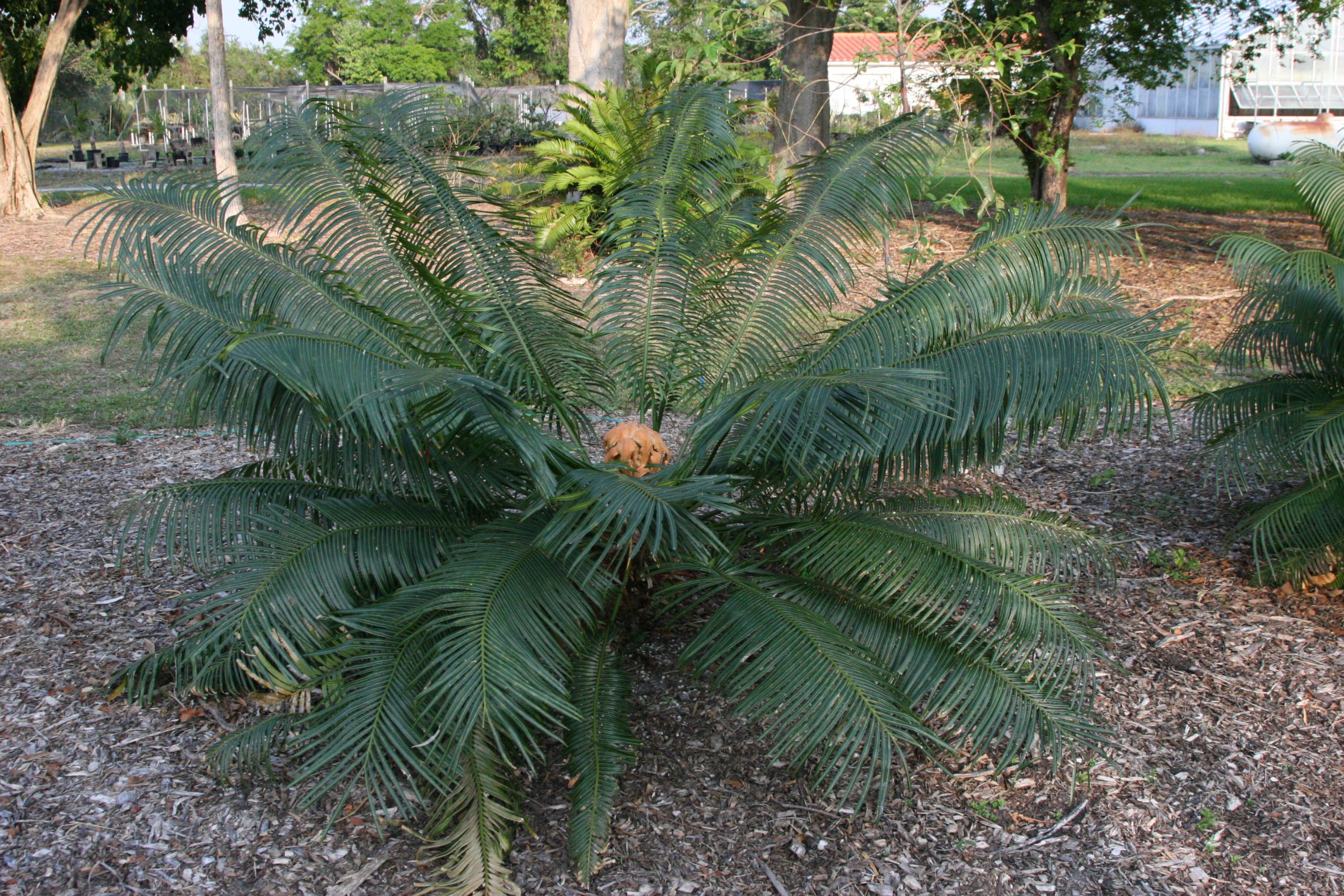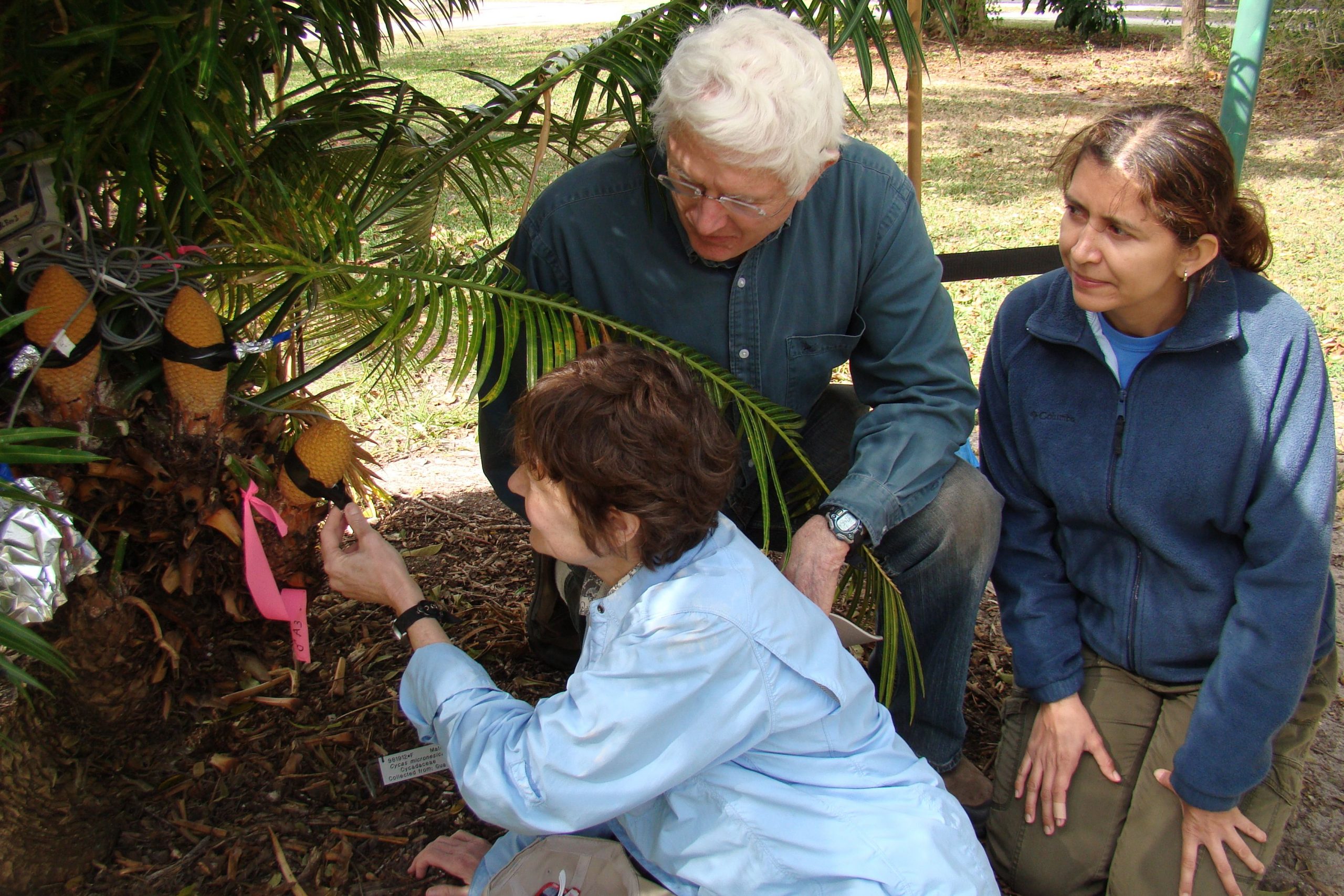Beautiful, intricate, or otherwise striking, flowers are one way plant conservationists draw attention to their cause. These splashes of color and unique forms are, in some ways, our answer to the charismatic megafauna that captivate the public. But while flowering plants are the largest group of plants, they are not representative of plants as a whole. In the next couple of newsletters, we will explore some of the non-flowering plants our Participating Institutions work on to understand and protect.
In this issue we explore the non-flowering vascular plants – these are the plants that most everyone would recognize immediately as plants: they have true roots and stems as well as vascular tissue. Some are more familiar than others. Conifers are well known trees in many parts of the U.S.; their evergreen foliage and cones of various sizes are familiar. But cycads, sometimes mistaken for palms, are another cone-producing group of plants found in the southeastern U.S. and in various places around the world. Both conifers and cycads, along with divisions of plants, are gymnosperms – producing seeds that are “naked” in that they are not wrapped in an ovule like those of flowering plants. Ferns are another large group of non-flowering vascular plants familiar to many. Unlike gymnosperms, they do not even produce seed. Instead, they release spores that grow into a free-living gametophyte (a part of the plant life cycle with half the chromosomes, and typically attached to and dependent on the sporophyte ‘adult’ plant in seed producers).
Ferns and gymnosperms once dominated the earth. In the times of dinosaurs, tree ferns and cycads were abundant and diverse. The appearance of those domineering flowering plants didn’t occur until the Triassic or Jurassic period, but they quickly took over. Though not as dominant as they once were, the non-flowering plants are an important part of our modern ecosystem and have their own unique beauty even without flowers trying to steal the show. Learn more about some of the non-flowering plants in the National Collection and what CPC’s Participating Institutions are doing to protect them in the stories below.
Saving Micronesian Cycad with Vital Collections
Micronesian cycad (Cycas micronesica), or fadang as it is sometimes called on Guam, is a large tree-like cycad native to the Micronesian islands of Guam, Rota, Palau, and Yap. The impressive cycad with sturdy green fronds was once extremely common on the island of Guam, and even the most common tree in many parts of the forest. However, this began to change in 2003 with the arrival, via horticultural imports, of the invasive insect pest Cycad Aulacaspis Scale, or CAS (Aulacaspis yasumatsui). The impact of this insect has been devastating.
CAS attacks cycads belonging to the genus Cycas by feeding on its sap. This diminutive insect congregates in enormous numbers, forming large white masses visible on the plants leaves, stems, and roots. The pest progressively weakens individual plants, causing them to deplete their energy stores while under stress, which eventually leads to their death. Being an introduced insect with no natural enemy present on the island, the microscopic scale insect was able to rapidly colonize the island, and by 2007 had spread to all native populations of the cycad in Guam and had recently made its way to the nearby island of Rota.
The scale completely eliminated seedling recruitment in all the cycad populations it colonized and weakened plants so badly in the most affected populations that cones were not being produced and reproduction had stopped altogether. Efforts at biological control attempted in Guam were insufficiently effective, and the situation was dire. Realizing the urgency of the situation, Thomas Marler of the University of Guam approached Montgomery Botanical Center (MBC) to conduct joint collaborative fieldwork to collect genetic samples and secure germplasm (living tissue that can be used to grow individuals, such as seeds, seedlings, or offsets for ex situ conservation).
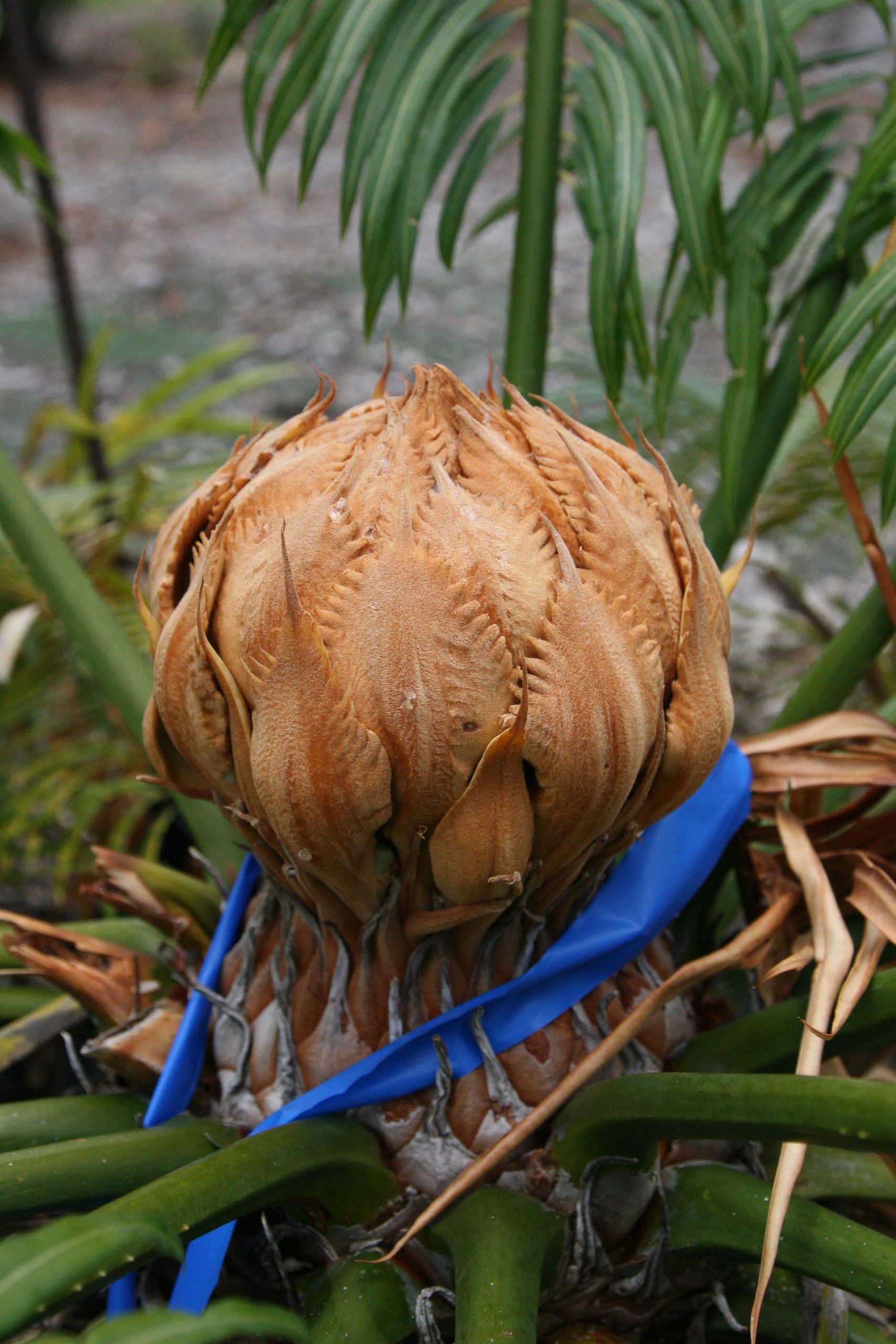
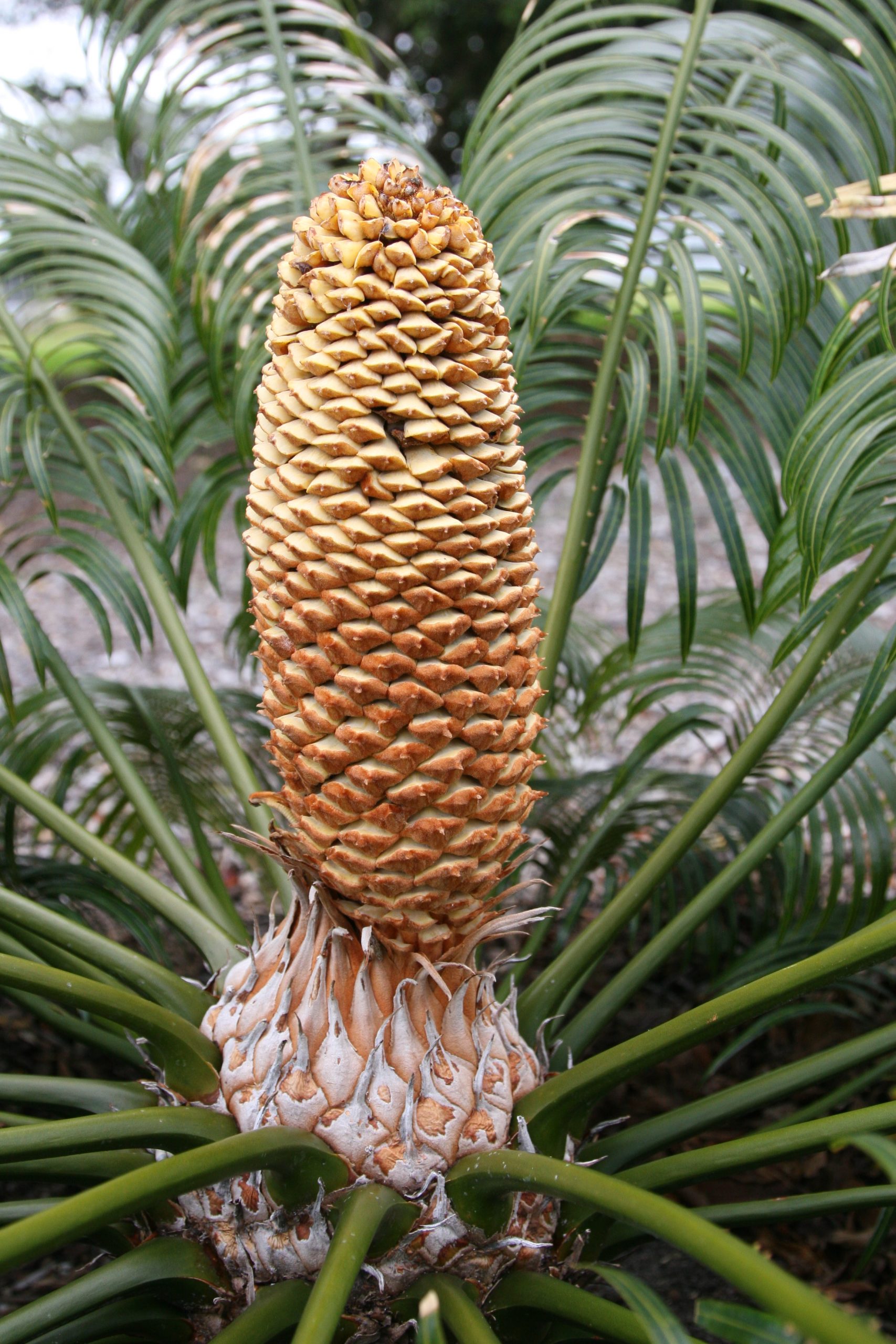
As a conservation, research, and education facility emphasizing palms and cycads, MBC was fully onboard. In 2007, MBC sampled DNA from all known cycad populations on both Guam and Rota and collected seeds from populations that were still reproductive. After germinating the seeds at MBC’s nursery, some of the resulting seedlings were distributed to other botanic gardens, and others were eventually planted in the field at MBC. New York Botanical Garden led the effort to conduct genetic studies of the species (Cibrián‐Jaramillo et al., 2010) using the samples collected.
Safe from CAS, the plants at MBC have thrived. The garden currently hosts 215 plants of Micronesian cycad in its living collection – grown from seeds collected from a total of 93 separate mother plants sampled across 22 separate wild populations – an impressive collection of the remaining diversity of the Guam and Rota populations. The collection is the largest single-species representation of any cycad at MBC and serves as an important safeguard against the species’ extinction.
The mission of the Montgomery Botanical Center is to advance science, education, conservation, and horticultural knowledge of tropical plants, emphasizing palms and cycads. As such, they have worked to build and maintain conservation collections of 259 cycad taxa. With collections impressively totaling over 7,000 individuals, MBC needs to be strategic about their remaining capacity. The development of MBC’s cycad collection is informed by studying the genetic diversity of wild cycad populations and comparing it with the diversity captured by MBC’s ex situ collection (see “Can a Botanic Garden Cycad Collection Capture the Genetic Diversity in a Wild Population?”, and “Will the Same Ex Situ Protocols Give Similar Results for Closely Related Species?”). These studies have shown that species biology must be considered when developing a collecting strategy, and that the genetic diversity of ex situ collections can best be conserved by managing populations separately, collecting and maintaining multiple accessions, and collecting samples over multiple years (see January 2019 Newsletter). As shown by recent collaborative research in collections genetics by several institutions, the combined holdings of a group of collections can be leveraged cooperatively as a metacollection to advance conservation and research.
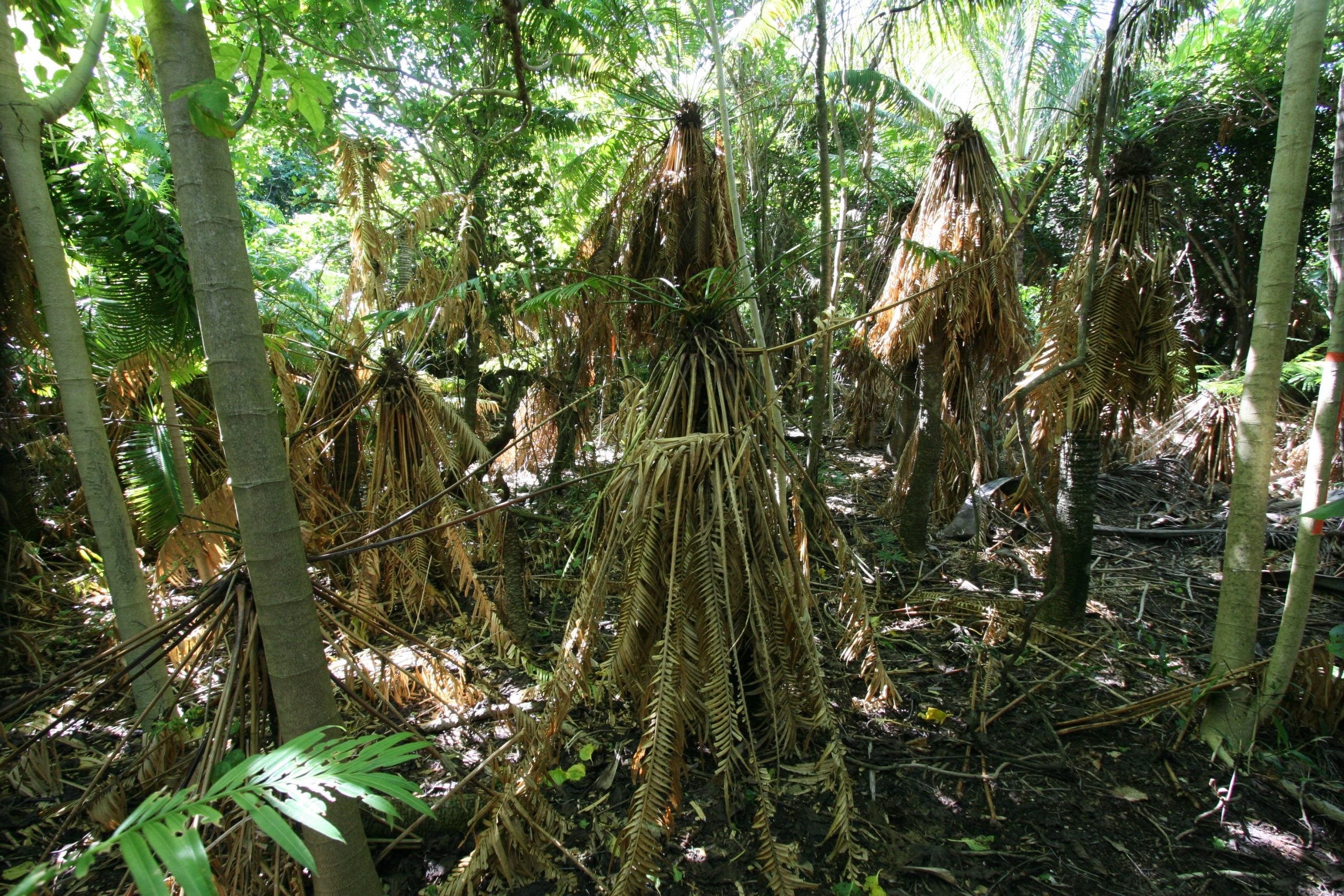
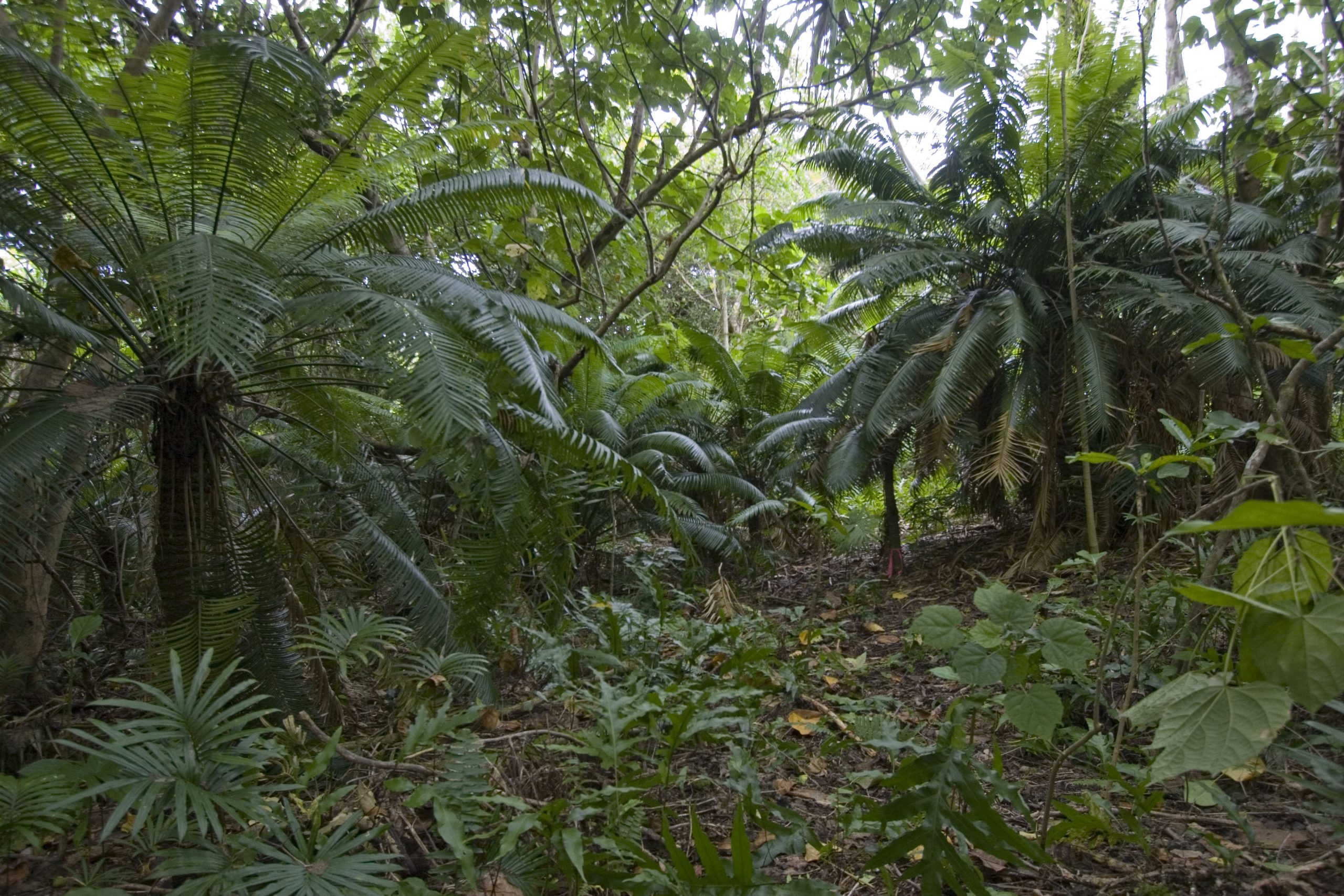
This valuable Micronesian cycad collection exemplifies how MBC contributes to the conservation of cycads: by developing population-based collections of high scientific and conservation value, propagating these collections, and promoting the advancement of knowledge about cycads by making these collections available to students and researchers.
The ground collection of Micronesian cycad at MBC is now largely reproductive, and numerous seeds have been produced via hand-pollination for distribution to other gardens and to cycad horticulturalists. Most importantly, seeds produced at MBC have been sent to strengthen the ex-situ collection of the species on the island of Tinian (Northern Marianas), which was established for potential reintroduction of the species to Guam if biological control is ultimately successful. These seeds are of critical importance. The Tinian collection can no longer be strengthened with wild-collected seeds because they are no longer being produced in native populations due to the devastation caused by CAS.
The living collection of this species at MBC, available to students and researchers throughout the world, has greatly advanced our understanding about Micronesian cycad specifically and also about cycads in general. Plants from MBC’s collection have been used in papers covering a broad range of topics, such as phytochemistry, physiology, anatomy, and phylogenetics. Dr. Irene Terry, professor at the University of Utah and MBC Research Fellow, has made extensive use of the collections for pollination biology research. Her studies include topics such as the production of heat and volatiles by C. micronesica cones and possible pollination vectors of open-pollinated cones at the garden.
MBC’s ex situ collection represents the diversity of the wild populations, provides a resource for research to increase understanding of the species, and provides seed to Tinian as potential reintroduction stock. MBC has made sure the populations of Micronesian cycad on Rota and Guam are not without hope.
